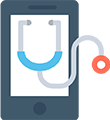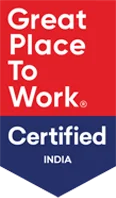Success Story
Setting up an offshore development center for a leading healthtech company in the United States
Services Used:
About the client
The client is a health information technology company founded in 2011, focused on improving people’s health outcomes through the use of technology and optimizing an online medical health practice system for health providers. Their integrated technology solutions include telehealth, EHR, patient portal, remote care, clinic process optimization and medical data exchange services.
- 2+ years of engagement with Daffodil
- 10+ team members
- 30% cost reduction
Business Situation
The client has a telemedicine solution that enables patients to find and connect with multi-specialty healthcare providers including individual providers, healthcare groups, and FQHCs. It offers the flexibility to check a provider’s availability slot and book appointments for teleconsultation. The app integrates with popular wearables that allow patients to monitor and record their health vitals, which can further be shared with physicians during consultation.
This telemedicine solution for appointment scheduling and e-consultation, however, had technical glitches and design issues that were drastically hindering user experience. Also, the increasing app abandonment rate raised the alarm to make improvements in the app at various levels.
To work around the problem, the client was on the lookout for a team of senior technical resources who could analyze the application, figure out technical as well as UX-related issues, and fix them. In addition to this requirement, the new team was expected to perform a competitive analysis to understand the gaps in the application’s feature set.
The key requirements that were presented to Daffodil included:
- Setting up an offshore development center where a dedicated team of senior resources (developers, testers, and UI/UX experts) would work on improving several aspects of the application.
- A dedicated team would work in collaboration with the in-house team of the healthIT company to bring improvements and advancements in the app.
- Ensure coordination between the teams due to varying time zones, setting up secure communication modes for the exchange of information.
- Develop, test, and deploy new features in the app to help the telemedicine provider improve their user acquisition and reduce app abandonment rate.
The Solution
As an offshore development partner to the healthIT firm, team Daffodil aligned a dedicated team (after interviews and hiring) to work on the telemedicine app. The team at the ODC included senior developers, quality analysts, and UI/UX designers.
At the inception stage, team Daffodil started with stakeholder study, persona identification, and competitor research to identify the gaps. On understanding these factors, a team of UX designers analyzed the app for the elements that were impacting the user experience with the app. Moreover, a team of developers and testers thoroughly analyzed the app for its functionality and performance to figure out glitches in the app.

On successful execution of these practices, team Daffodil created functional prioritization for improvement in the app, followed by storyboarding and wireframes. The user interface of the telemedicine app had several loopholes, affecting usability, credibility, and accessibility of the app. That is why, a new interface was designed from scratch to refine the user experience.
While examining the user interface and functionality of the app, several technical glitches were detected that were prioritized for improvement. For example, there were issues in setting connections with some BLE devices. Also, during the video consultation session, the users were not able to resume a call which is disconnected due to any interruption. For issues like these, several SDK level improvements were executed by team Daffodil in the first place.
In addition to this, there were features in the existing app that needed enhancement. For example, there was no option in the app to schedule an in-person consultation with the provider. Also, the app had no provision to include multiple (or family) members in the call, which was highly needed in the case of geriatric consultation.

Some of the key features that were introduced in the app were:
- Improved Appointment Scheduling: The appointment scheduling module in the app is upgraded with the option to book in-person consultation with a physician (this was earlier limited to booking online consultations only). Moreover, the appointments can be segregated as upcoming or past appointments and can be sorted as complete or pending appointments.
- Advanced Video Calling Sessions: The app is updated for high definition video calling option that enables the users to rejoin the video after any interruption. Users are provisioned to add family members and doctors in the call, can share documents, capture screenshots, etc.
- Measure and Share Health Vitals: The app is integrated with new BLE devices (like a smartwatch) to monitor & record health vitals, and then share these vitals with providers.
The app is updated with other beneficial features such as managing family’s data, medication reminders & usage instructions, better visibility of physician’s availability slot, providers feedback and ratings, etc.

The Impact
The telemedicine app is revamped with a new UI/UX which is enabling users to make the most of the app. By fixing technical glitches in the app and add-on of new features, there is a significant improvement in user acquisition and retention rate. With respect to these enhancements and their success, the HealthIT company has futuristic plans to introduce improvements such as code refactoring, code security, chatbot support, improvised architecture, AI/ML for exercise support, etc.
Read Related Case Studies
Get in Touch
Sign up for a 30 min no-obligation strategic session with us
Let us understand your business objectives, set up initial milestones, and plan your software project.
At the end of this 30 min session, walk out with:
- Validation of your project idea/ scope of your project
- Actionable insights on which technology would suit your requirements
- Industry specific best practices that can be applied to your project
- Implementation and engagement plan of action
- Ballpark estimate and time-frame for development








